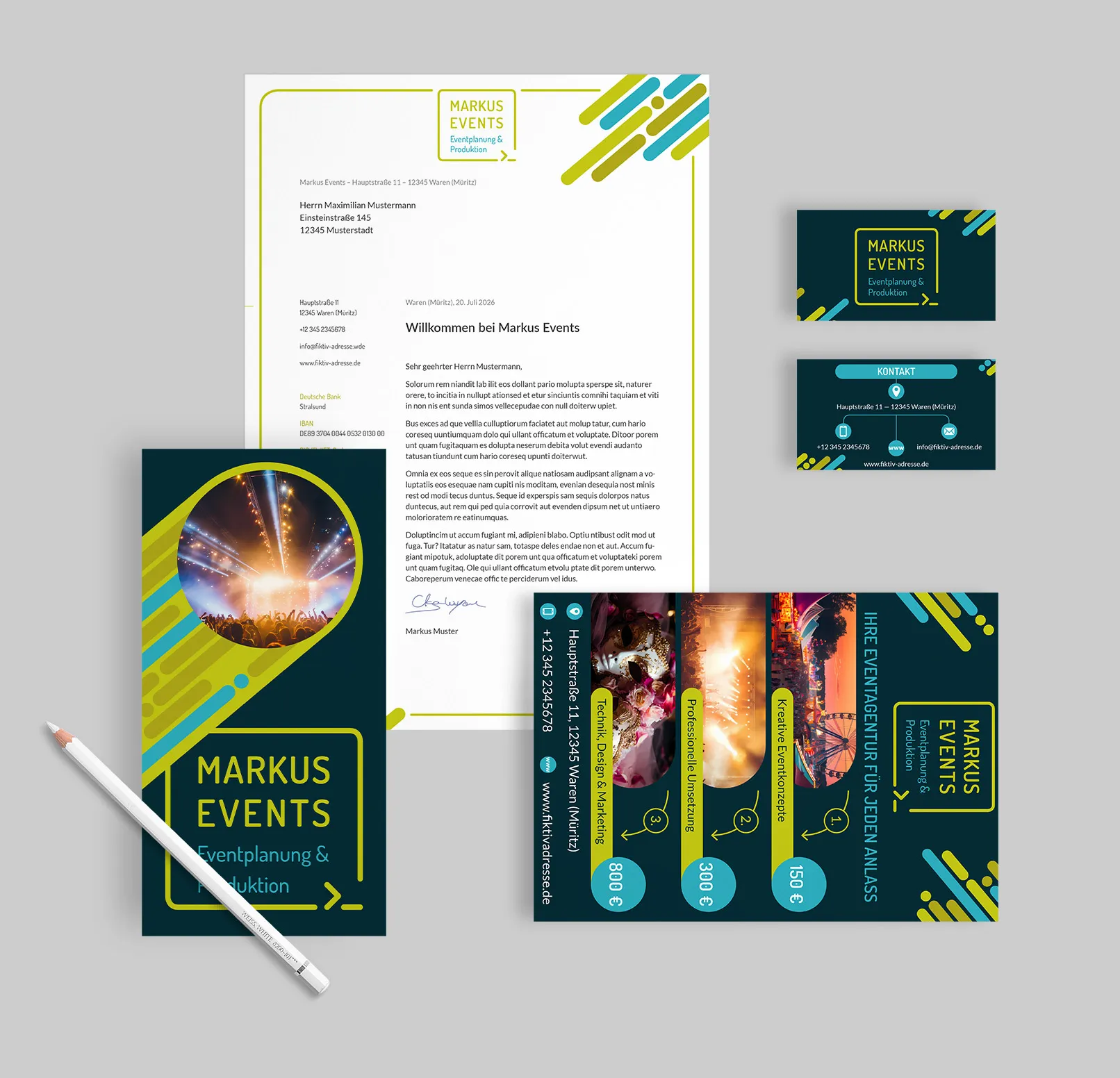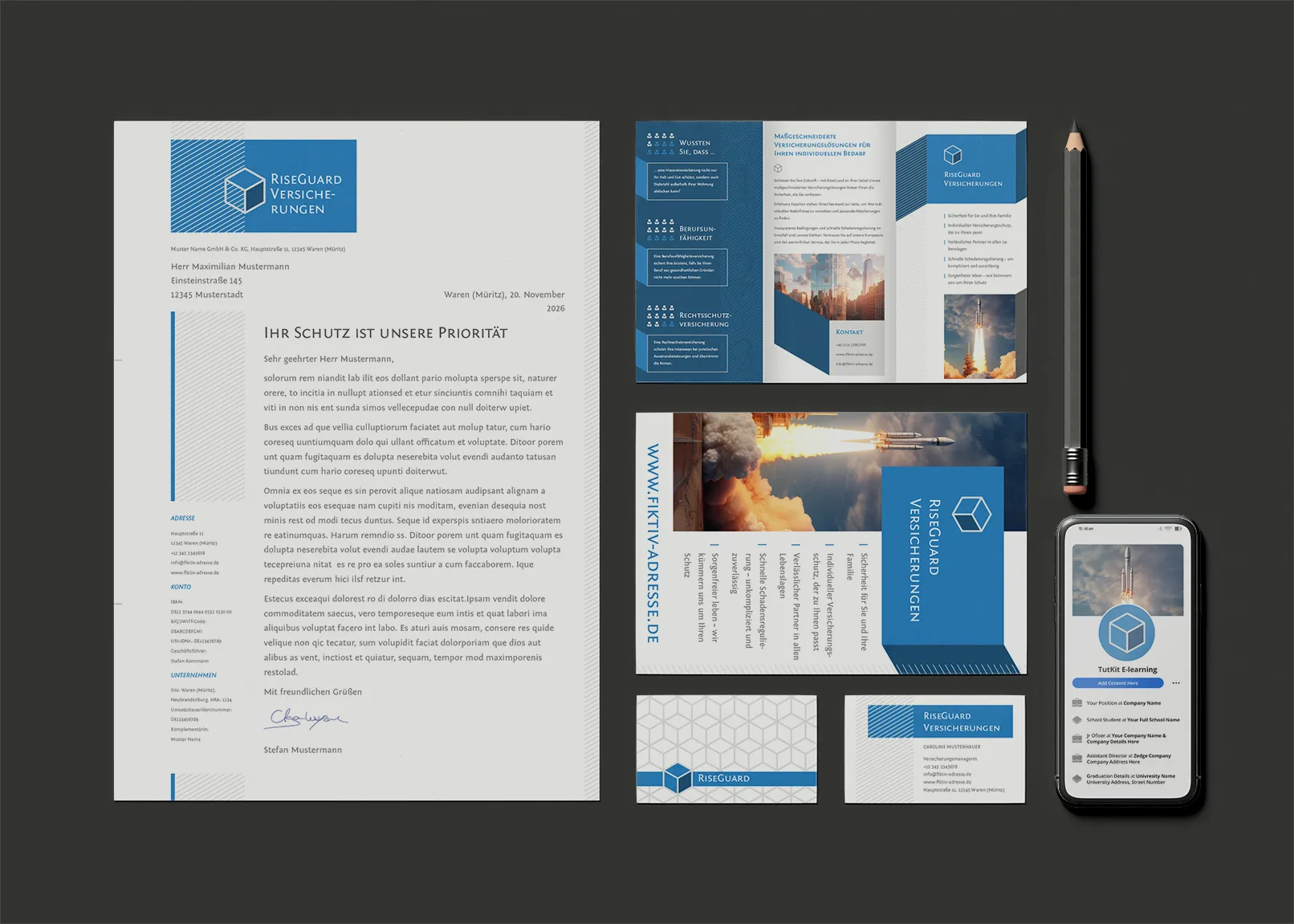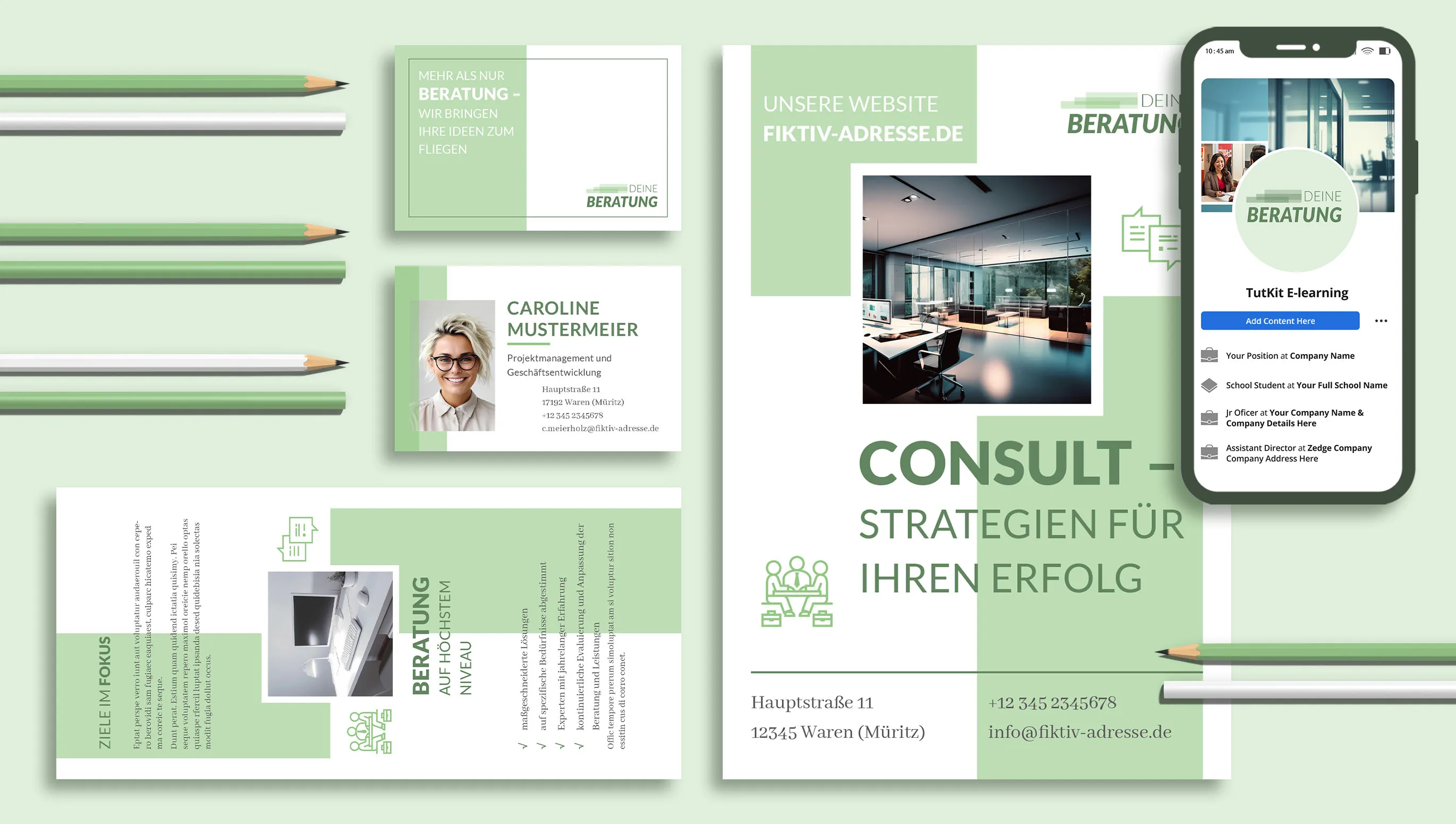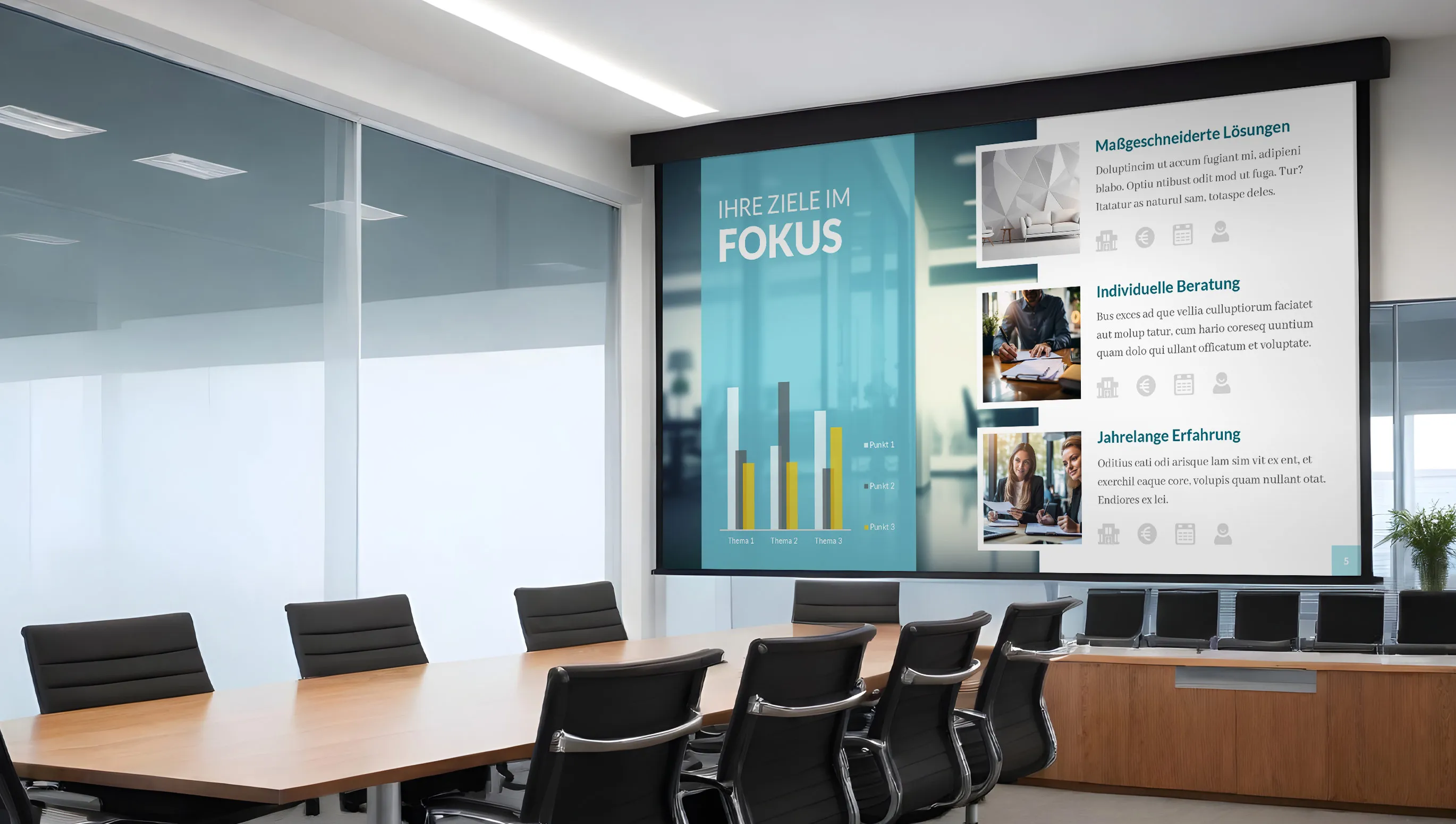Alongside corporate identity and corporate communication, corporate design (CD) is one of the most important aspects of a company's identity. It encompasses the visual and linguistic staging of the brand and serves to visualize the personality and values of the company in its means of communication. Authenticity, flexibility and recognizability are the hallmarks of a good corporate design.
Table of contents
Advantages of corporate design
Corporate design is an expression of a brand's personality. It visualizes and communicates the brand strategy, brand identity and brand values, creates differentiation from competitors and recognition value at all brand contact points. All brand and design elements - brand name, logo, formula, colors, shapes, fonts, images and tonality - create a recognizable and consistent brand experience.
A good corporate design creates the potential for the target group to identify with the brand and thus contributes to long-term customer loyalty. In addition, it also has an internal effect by creating identification with the corporate brand among employees and thus contributing to their loyalty.

The corporate design process
The complete corporate design process consists of five phases: Briefing, Analysis, Strategy, Creation and Implementation.
Briefing
The briefing is the cornerstone of every corporate design project and the key to a successful collaboration between company and agency. In the briefing phase, the company provides the design agency with all the important information on problems, project goals, project background, timing and specifications.
Analysis
Every corporate design project begins with a comprehensive analysis phase to record and evaluate the status quo. The analysis serves to answer the most important open questions. How are the brand and design currently perceived? Who is the target group? How is the brand positioned among the competition? What trends can be observed and how do they influence the brand? Are there any weak points in the current customer journey? Clarifying these key questions is essential in order to gain important insights and derive recommendations for strategy and design development.
Strategy
Corporate design should always be based on a clear strategic foundation. Before the design process begins, the brand must be clearly positioned. In workshops, the agency and company work together to develop the brand identity, brand values and unique selling points and formulate a clear, future-oriented strategy. Vision, mission and a creative central idea inspire the design team and are the guidelines for the design of the brand identity.
Creation
The visual identity of the brand is developed in the design phase. It includes all design elements that are necessary to create an integrated brand experience. To this end, all touchpoints in a brand world are summarized and the respective requirements for the touchpoints and the corresponding need for action are identified. Typical brand and design elements in corporate design are
Logo
The image or symbol with which people can best identify a brand at first glance, even if the name is not visible.
Typeface
Typefaces used by companies or even designed exclusively for them say a lot about the character of the brand - conservative, businesslike, sweet, disruptive, etc.
Color scheme
Colors are cultural and emotional carriers of meaning. Viewers infer certain brand characteristics from colors. The design of a color scheme is therefore just as much a part of corporate design.
The best and most successful brands are completely coherent. Every aspect of what they do and what they are reinforces everything else.
Wally Olins
Visual language
Images have the power to convey emotions and messages directly. It's not just the subject that's crucial, but also the mood of the image: light, color climate, contrast and composition.
Icons
A concise icon system facilitates the communication of content and can contribute significantly to the identity of a brand. Ideally, the brand can be recognized by the style of the icons.
Design grid
The design grid or grid serves to organize, systematize and showcase content. Design laws and principles support eye movement and thus help to capture content.
Implementation and brand guidelines
Any idea is only as good as its implementation. At the interface between design and production, the utmost care and professionalism is required. At the end of every corporate design project, brand books (style guides) and binding design guidelines should therefore be drawn up to ensure consistent implementation of the new brand identity.

Examples of companies with successful corporate design and their slogans
Apple: "Think Different". This slogan reflects Apple's commitment to innovation and desire to stand out from the competition. The minimalist and clear design of the logo and products supports this idea and makes the brand recognizable and desirable.
Nike: "Just Do It". With this inspiring slogan, Nike underlines its dynamic and active image. The "Swoosh" logo symbolizes movement and action, which fits perfectly with the motivating character of the slogan.
Coca-Cola: "Taste the Feeling". This slogan encourages people to associate drinking Coca-Cola beverages with pleasant feelings and moments of joy. The red color and the characteristic Coca-Cola lettering support this message and make the brand easily recognizable and popular.
Google: "Doing the right thing". Although Google often experiments with the visual design of its logo, the core idea is to provide users with reliable and efficient information. The slogan reflects the company's commitment to social responsibility and ethics.
IKEA: "The wonderful everyday". IKEA's slogan emphasizes that ordinary things can be wonderful if they are well organized and stylishly designed. The blue and yellow color palette and simple, functional product design support this idea and make IKEA products accessible and attractive to a wide audience.
Brands and branding are the most significant gifts that retail has ever given to popular culture.
Wally Olins
Difference to Corporate Identity
The terms corporate design and corporate identity are often used interchangeably. However, corporate identity refers to the entire corporate identity, i.e. all the characteristics of a company that make it unmistakable and distinguish it from other companies. This includes corporate design, but also corporate culture, corporate communication and corporate behavior.
Range of templates for corporate design on TutKit.com
Our portal TutKit.com offers a wide range of corporate design templates tailored to the needs of different industries and companies. These templates can be easily customized and are available for instant download, making them a handy tool for creating a corporate design. Below is an overview of some of the templates available:
The corporate design templates include
- Presentation templates: Designed to create professional presentations that reflect a company's corporate style.
- Billboards and posters: outdoor advertising and poster templates that help reinforce a brand's visual presence.
- Flyers and folders: Designs for informational and promotional flyers and folders for documents.
- Business cards: Templates for creating unique business cards that match the corporate style.
- Brochures and newspapers: Various layouts for printed materials, including brochures and corporate newspapers.
- Roll-ups: Designs for mobile advertising stands used at trade fairs and presentations.

We also have other templates available for you to download
Additional templates:
- Resume templates (CV): Help to create a professional CV that reflects the individuality of the applicant.
- Envelopes and invoices: Templates for designing business documents that match the corporate style.
- Documents and certificates: Templates for creating official documents, certificates and thank-you letters.
- Invitations and cards: Designs for creating invitations to events and holiday cards.
- Infographics: Templates for data and information visualization that improve awareness and reinforce brand messaging.
TutKit.com not only offers a wide selection of corporate design templates, but also many other resources, including mockups, vector graphics and illustrations, textures and overlays, as well as animations and video footage. All templates are high quality, which is confirmed by more than 10,000 verified reviews for our content, and ensure easy customization and use.

